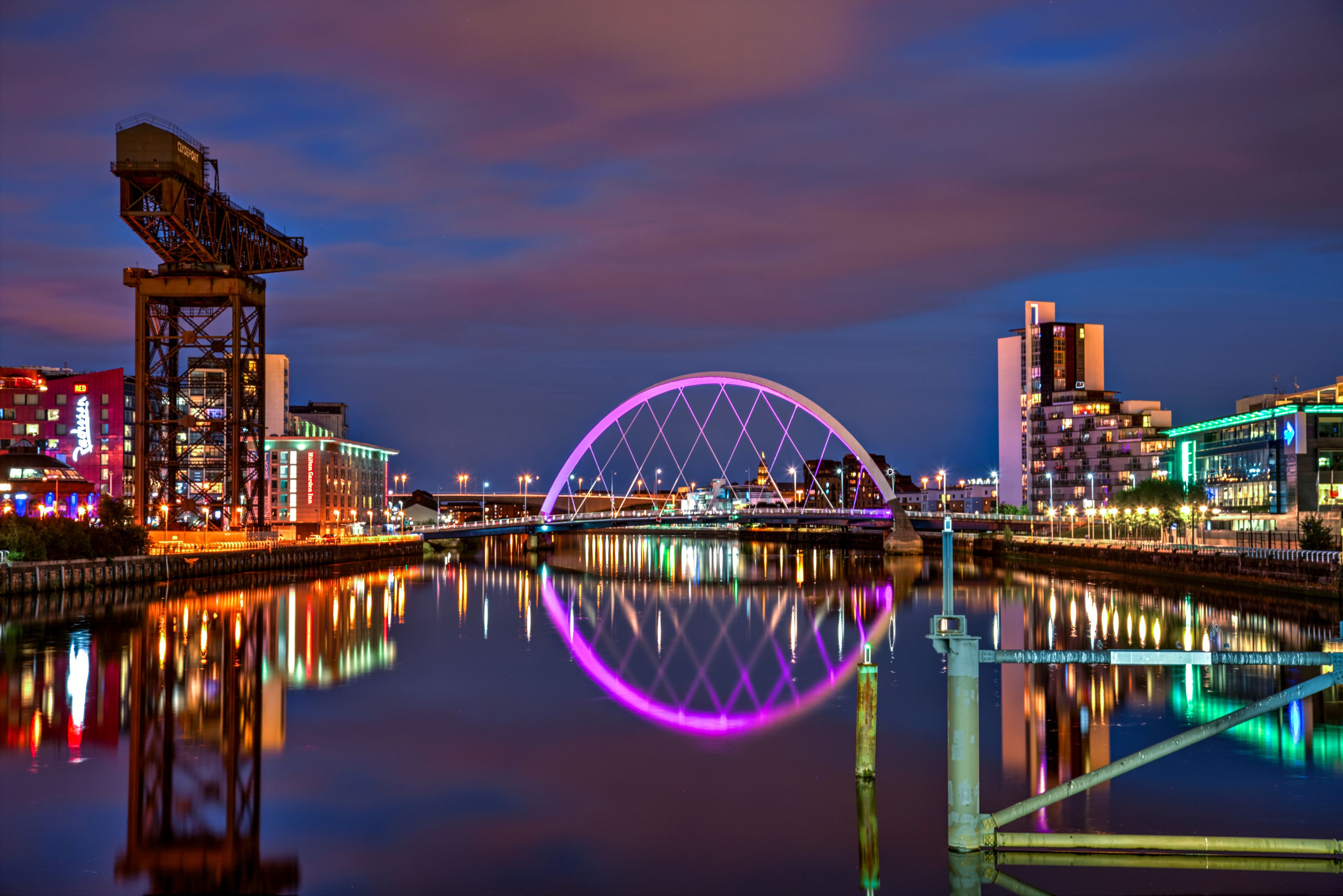
As the Institute of Export & International Trade (IOE&IT) heads to Glasgow for its annual general meeting, the IOE&IT Daily Update looks at the city’s trading past and considers its bright future.
Glasgow is a city of paradox. Despite it being called “the birthplace of the industrial revolution”, it is also known affectionately by locals as the “dear green place”.
For all it being a city with a reputation founded on shipbuilding, that once claimed to be the “second city of the Empire”, its shipbuilding industry arguably only shone for a relatively small part of its history.
Today, its port is the biggest in Scotland, the city was host to COP26 and it refers to itself as “the gateway to Scotland”.
Like most port cities, the story of Glasgow is bound up in the history of trade. Here again it was a relatively late starter.
Its location made it a natural fit to trade with America as that market opened and developed, and the city soon became what today would be called a European hub for the tobacco industry. But the city came of age as the industrial revolution reshaped Victorian Britain.
A Victorian awakening
The 19th century saw dramatic changes in the UK and around the world as the impact of industrialisation was felt. It was transformational for Glasgow.
In 1801 its population was estimated at 77,000. Twenty years later, it had doubled and a century later, it had increased tenfold.
Having turned its eyes early to the potential of America and transatlantic trade, Glasgow became integral to the tobacco industry, emerging as a crucial stop on the product’s route into the European market.
Glasgow’s “tobacco lords” effectively built the modern city on the back of these profits. The city is home to the glorious, monumental Victorian architecture they left behind, including the largest marble staircase anywhere in Europe (in City Hall).
In common with many trading cities, this raises uncomfortable questions about how it was built on the backs of slaves. It also led to more immediate issues of inequality, with the new West End mansions standing in stark contrast to the slum conditions of the East End.
A reputation built on the Clyde
Glasgow has been home to shipbuilding in some form or another since the 15th century, but for most of that time was a minor player. Then in the 1800s, the Clyde’s riverbed was deepened, and sections were turned into canals. This occurred at the same time as industrialisation, several key drivers of which were discovered in Glasgow or by Glaswegians. It was a pivotal moment for shipbuilding on the Clyde.
From the 1850s onwards, the “Clyde Built” mark became a hallmark for quality. As the Clyde’s importance and reputation in global ship building grew, so more shipyards opened on the banks of the river. By the end of the 19th century and early 20th century it is estimated that the Clyde was producing around 20% of all ships in the world.
This golden age wouldn’t last. With brief pickups for the two world wars, when its shipyards were vital to keeping the Royal Navy supplied, the 20th century saw a steady decline in shipbuilding on the Clyde. Ships are still being built in the area, but the industry is a pale shadow of what it was.
Still a major port
Even as shipbuilding has declined, the city’s port has remained a gateway to the American market. Today, owned and operated by Peel Ports, Clydeport is the second largest port group in the UK, handling over 70m tonnes of cargo each year. It consists of what Peel Ports describes as “some of the biggest, deepest, busiest and most advanced facilities in Europe”.
With facilities for handling commodities such as containers, forest products, agribulk, project and bulk cargo, as well as a reputation for decommissioning of ships and oil and gas platforms, Clydeport consists of Greenock Ocean Terminal (a container and cruise ship terminal), Inchgreen dry dock, Hunterston PARC, King George V Dock in the heart of Glasgow and the ferry port at Ardrossan, which provides the ferry service to Arran.
With facilities that include the largest drydock in Scotland, the deepest deep-water jetty in Western Europe and a new facility to attract some of the world’s largest cruise ships, it stores and processes more than 15.4m tonnes of cargo a year and sees off or welcomes over a hundred thousand cruise passengers.
All at sea
The Greenock Ocean Terminal is the biggest container terminal on Scotland’s west coast, responsible for handling of 100,000 twenty-foot equivalent units (TEUs) a year. It is set within a 50-acre site with a laden storage area of up to 7,000 TEUs and an empty storage area of up to 3,500 TEUs. Large, modern multiuser warehousing can transit 65,000 containers a year.
Two new cranes, at a cost of £17m, are due to be fitted later this year. It will be the largest single investment the port has ever made. With a competition open for local school children to name the cranes, it’s not impossible at least one will get dubbed 'Craney McCraneface'.
Nowadays
Today, the Glasgow City Region is better known for technology than tobacco. Now the fourth largest city region in the UK, it is a key engine of economic growth in Scotland, with a gross value added of £47.3bn.
Over the past 40 years, the city has shaken off its industrial past and the City Region is leading one of the largest and most advanced of UK City Deals, with over £1bn in funding from the UK and the Scottish governments.
The city is also home to no fewer than four innovation districts:
- The Glasgow City Innovation District
- The Glasgow Riverside Innovation District
- The Advanced Manufacturing Innovation District Scotland
- Clyde Gateway
Each of these districts is focused on a different technology sector, ranging from advanced manufacturing to renewable energy, from fintech and services to precision medicine.



